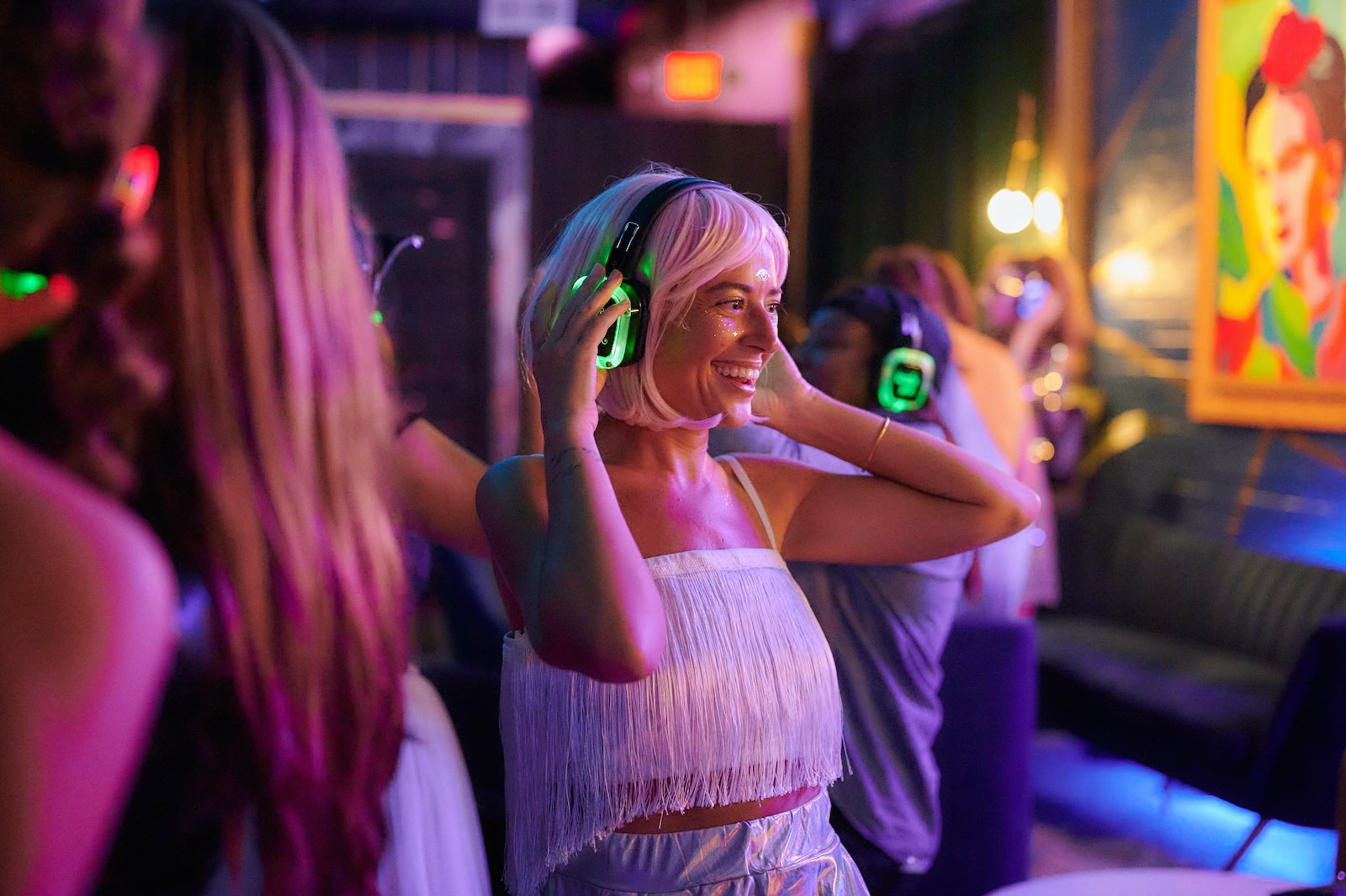
Silent Disco: Unique and Immersive Entertainment Technology
Ever heard of a “silent disco”?
A silent disco is an entertainment technology where music or audio is played through wireless headphones instead of traditional loudspeakers. DJs transmit music wirelessly to participants’ headphones, creating a one-of-a-kind audio experience.
Background
Silent disco emerged in the 1990s as a solution for providing entertainment in noise-sensitive areas like libraries and museums. Its popularity surged in the early 2000s, especially at music festivals. A notable example was its use at the 2002 Glastonbury Festival in England, where music was played late at night without disturbing nearby residents.
Since then, silent disco has been utilized in various events, including music festivals, private parties, corporate gatherings, and weddings, supported by advancements in wireless technology.
When is Silent Disco Suitable?
- Noise-Sensitive Areas
Perfect for residential or public spaces where loudspeakers are impractical. - Outdoor Events with Noise Restrictions
Cities with strict noise ordinances often adopt this technology for outdoor events. - Events with Multiple Music Styles
Participants can switch between channels to enjoy their preferred genre. - Private Parties
Offers an intimate, personalized experience, allowing guests to control the music they listen to.
How Does Silent Disco Work?
Silent disco systems transmit audio wirelessly to participants’ headphones:
- Audio Source
Music from DJs or audio devices is sent to a transmitter. - Transmitter
Converts audio signals into wireless signals and transmits them to headphones. - Wireless Headphones
- Multi-Channels: Participants can switch between channels.
- Noise Isolation: Earmuffs block external noise for an immersive experience.
- LED Lights: Many headphones feature lights that sync with music, adding visual appeal.
- Rechargeable Batteries: Typically designed for extended use.
- Participant Audio Control
Participants can choose audio streams or channels to suit their preferences.

Pros and Cons of Silent Disco
Pros:
- No Noise Restrictions: Ideal for areas with strict noise limits.
- Multi-Channels: Flexibility to play various music genres.
- Better Audio Quality: Not affected by environmental noise.
- Intimate Experience: Provides a personal and immersive musical experience.
- Customizable: Can be tailored to fit event requirements.
Cons:
- Higher Costs: Requires numerous devices like headphones and transmitters.
- Technical Issues: Prone to signal interference or device malfunctions.
- Limited Range: Unsuitable for events with large venues.
- Lacks Shared Experience: Participants enjoy music individually, reducing the sense of togetherness.

Conclusion
Silent disco offers an innovative solution for audio entertainment, particularly in noise-sensitive areas or under strict regulations. With features like multi-channels, superior audio quality, and adaptability, it is a compelling choice for various events. While it has some drawbacks, the advantages outweigh them, ensuring a memorable event experience.

